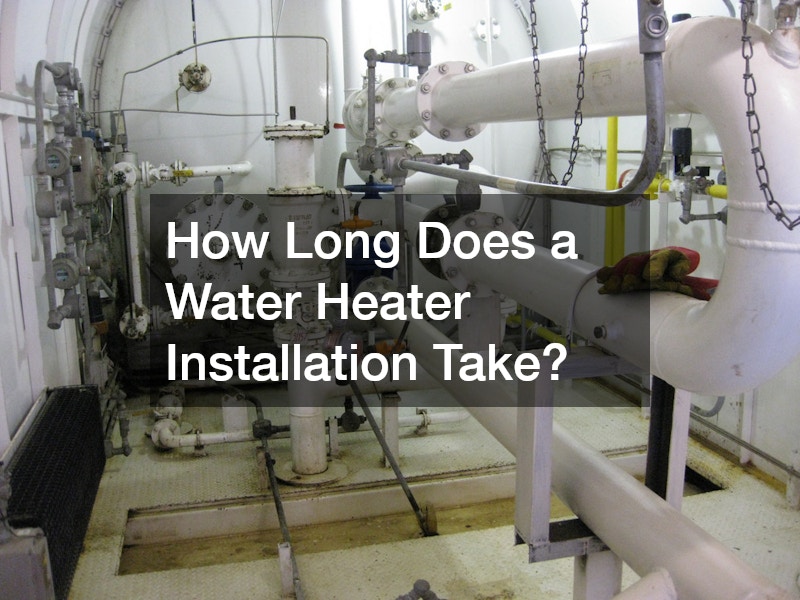
In this article, we will explore the typical timeframes for water heater installation, addressing common factors and considerations that affect the duration of installation. Whether you’re a homeowner planning a DIY installation or considering hiring a professional, understanding the time involved can help you prepare better. Knowing the ins and outs of water heater installation processes can facilitate a smoother experience and manage expectations regarding time investment.
Factors Influencing Water Heater Installation Time
Type of Water Heater
The type of water heater you choose significantly influences the installation time. Traditional tank water heaters are generally easier and quicker to install, typically requiring less complicated connections and setup compared to tankless systems.
On the other hand, tankless water heaters may demand more intensive labor and additional setup, especially if retrofitting is necessary to accommodate the new system.
Heat pump water heaters also present unique challenges, often necessitating a well-ventilated space which can add to installation complexities. Similarly, solar water heaters, requiring strategic placement for maximum sunlight exposure, could extend installation time due to planning and setup intricacies. Each type requires different levels of expertise and tools, thereby directly impacting how long the installation process will take.
Complexity of Installation
Installation complexity varies with factors such as existing infrastructure and the extent of additional work required. Retrofits, for instance, often require modifications to existing water lines or gas lines, which could lengthen the installation process. Moreover, older homes may present unique challenges due to outdated plumbing systems, leading to extended installation time.
Adding new plumbing connections significantly increases the time required, particularly if the water heater is being moved to a new location. The necessity for updated electricity connections or gas lines can also introduce further complexities. These factors can transform a straightforward installation into a time-intensive project requiring specialized skills.
Professional vs. DIY Installation
Choosing between professional installation and a DIY approach significantly impacts the timeline of a water heater installation. Professional services offer efficiency and expertise, often completing what could be a full day’s task in just a few hours. However, they come at an additional labor cost, which is a factor for those considering budget constraints.
In contrast, a DIY installation might take longer due to a learning curve and potential challenges in handling unforeseen issues without professional tools and experience. Homeowners attempting a DIY installation should anticipate spending extra time on troubleshooting and correction. Additionally, the lack of immediate access to replacement parts can cause delays when tackling problematic installations on their own.
Understanding Timeframes for Standard Installations
Preparation and Removal of Old Unit
The preparation phase is a crucial step that sets the groundwork for a successful water heater installation. Generally, this involves disconnecting the old unit from water lines and power sources, which may take from half an hour to a few hours, depending on access and complexity. Particular caution is needed to safely drain and dispose of the existing water heater as per local regulations.
Additionally, it may involve clearing space for the new unit, which can add to the time, especially if modifications are necessary for proper placement. Each step in preparation is vital to ensure the smooth progress of the subsequent installation stages. Properly accounting for these tasks enhances efficiency and helps prevent delays during installation.
Installation of the New Unit
The actual installation of a new water heater can range from a simple task to a complex endeavor. For traditional tank models, once the connections are properly placed, the process may take only about 2-4 hours. However, installing a tankless or solar water heater might be more time-consuming, potentially taking up most of the day due to additional setup requirements.
Installation timelines also depend on the condition of the home’s existing infrastructure. Any necessary updates or corrections to the infrastructure during this phase can prolong completion time. Therefore, understanding the home’s specific requirements ahead of time helps in scheduling accordingly and ensuring an efficient installation process.
Testing and Safety Checks
After installing a water heater, an essential step is conducting thorough testing and safety checks. This phase is crucial, as it verifies that all connections are secure, the unit operates correctly, and there are no gas leaks or electrical issues. Failure to conduct proper tests can result in operational problems or safety hazards like leaks or inefficient heating.
Typically, testing begins with running water to assess both temperature consistency and pressure. Professionals might use specialized equipment to confirm that all operational parameters meet safety standards. This step often takes about 30 minutes to an hour, but addressing any issues that arise might lengthen the timeframe.
Common Issues That May Extend Installation Time
Unexpected Plumbing Issues
Unexpected plumbing issues are a common cause of delays in water heater installation. Older homes, in particular, may have outdated plumbing that’s incompatible with new units, necessitating additional adjustments or repairs. Such complications often require additional time for troubleshooting and problem-solving, sometimes necessitating a plumber’s expertise.
Availability of Necessary Parts
The availability of necessary parts can considerably impact the installation timeline of a water heater. In some cases, specific connectors or specialized components may not be readily available, especially in less common water heater models. This scenario can lead to extended downtime while waiting for parts to be ordered and delivered.
Understanding the factors that affect the duration of water heater installation helps you plan and manage expectations. While the process typically spans a few hours to a full day, unforeseen issues can extend the timeline. Proper preparation and selecting professional services can ensure a smoother and quicker installation process, mitigating potential delays from unexpected issues, parts shortages, or logistical challenges.






